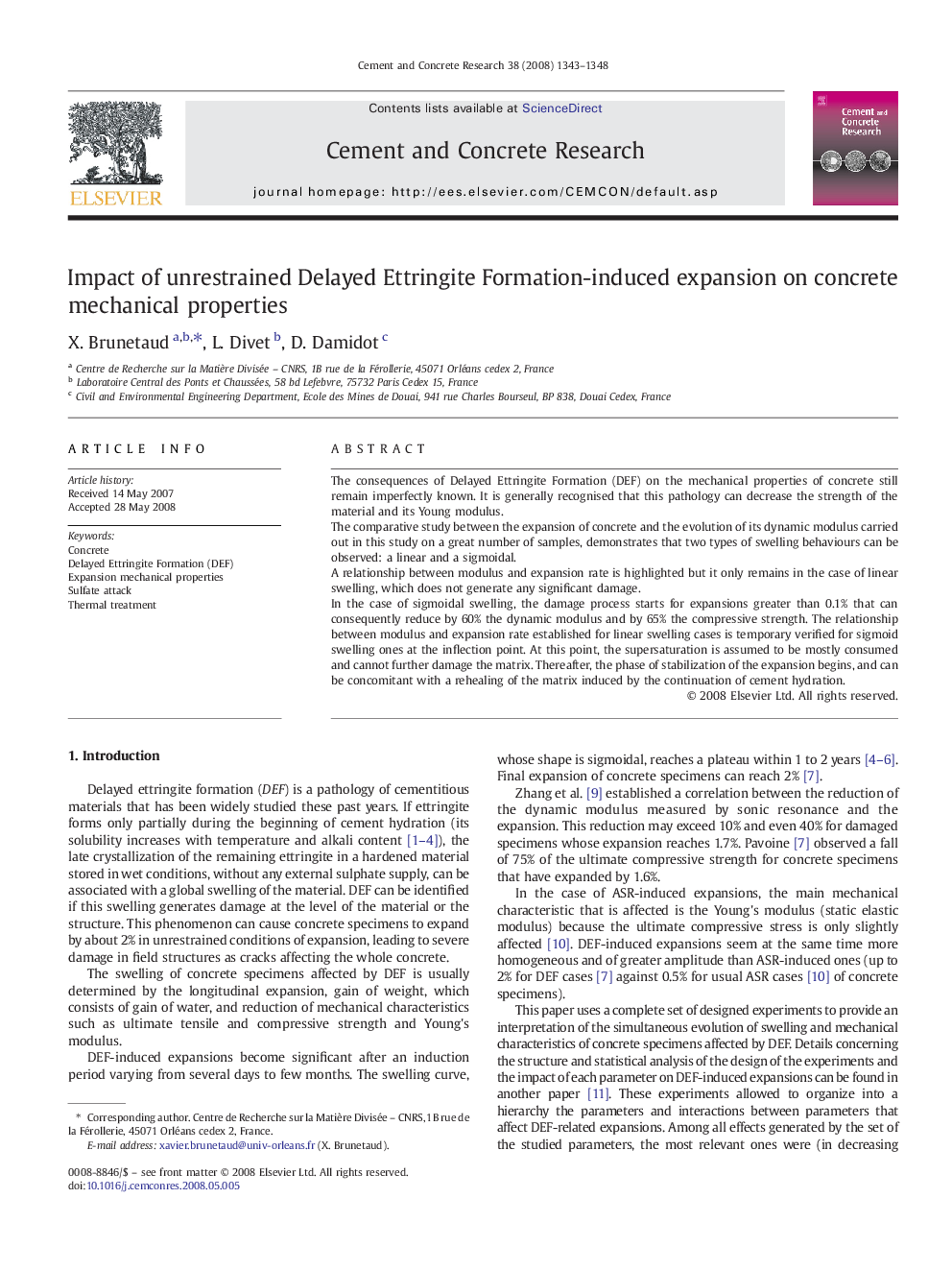| Article ID | Journal | Published Year | Pages | File Type |
|---|---|---|---|---|
| 1457314 | Cement and Concrete Research | 2008 | 6 Pages |
The consequences of Delayed Ettringite Formation (DEF) on the mechanical properties of concrete still remain imperfectly known. It is generally recognised that this pathology can decrease the strength of the material and its Young modulus.The comparative study between the expansion of concrete and the evolution of its dynamic modulus carried out in this study on a great number of samples, demonstrates that two types of swelling behaviours can be observed: a linear and a sigmoidal.A relationship between modulus and expansion rate is highlighted but it only remains in the case of linear swelling, which does not generate any significant damage.In the case of sigmoidal swelling, the damage process starts for expansions greater than 0.1% that can consequently reduce by 60% the dynamic modulus and by 65% the compressive strength. The relationship between modulus and expansion rate established for linear swelling cases is temporary verified for sigmoid swelling ones at the inflection point. At this point, the supersaturation is assumed to be mostly consumed and cannot further damage the matrix. Thereafter, the phase of stabilization of the expansion begins, and can be concomitant with a rehealing of the matrix induced by the continuation of cement hydration.
